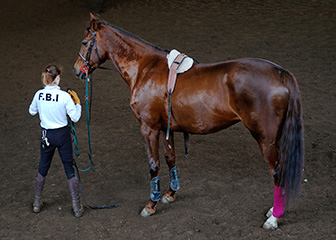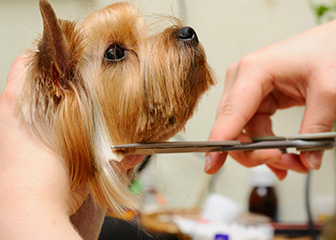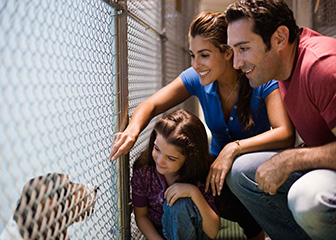What Animal Care and Service Workers Do
About this section

Pet sitters care for pets while the owner is at work or on vacation.
Animal care and service workers care for the needs of animals. They feed, water, groom, bathe, and exercise pets and other nonfarm animals. Job tasks vary by position and place of work.
Duties
Animal care and service workers typically do the following:
- Feed and give water to animals
- Clean equipment and the living spaces of animals
- Monitor animals and record information such as their diet, physical condition, and behavior
- Examine animals for signs of illness or injury
- Exercise animals
- Bathe animals, trim nails, clip hair, and attend to other grooming needs
- Train animals to obey or to do specific behaviors
Animal care and service workers train, feed, groom, and exercise animals. They also clean, disinfect, and repair the animals' cages. They play with the animals, provide companionship, and observe behavioral changes that could indicate illness or injury.
Boarding kennels, pet stores, animal shelters, rescue leagues, veterinary hospitals and clinics, stables, laboratories, aquariums and natural aquatic habitats, and zoological parks all house animals and employ animal care and service workers.
Nonfarm animal caretakers typically work with cats and dogs in animal shelters or rescue leagues. All caretakers attend to the basic needs of animals, but experienced caretakers may have more responsibilities, such as helping to vaccinate or euthanize animals under the direction of a veterinarian. Caretakers also may have administrative duties, such as keeping records on the animals, answering questions from the public, educating visitors about pet health, or screening people who want to adopt an animal.
Animal trainers train animals for riding, security, performance, obedience, or assisting people with disabilities. They familiarize animals with human voices and contact, and they teach animals to respond to commands. Most animal trainers work with dogs and horses, but some work with marine mammals, such as dolphins. Trainers teach a variety of skills. For example, some may train dogs to guide people with disabilities; others teach animals to cooperate with veterinarians or train animals for a competition or show.
The following are types of animal care and service workers:
Groomers specialize in maintaining a pet's appearance. Groomers may operate their own business, work in a grooming salon, or, increasingly, run their own mobile grooming service that travels to clients’ homes. Demand for mobile grooming services is growing because these services are convenient for pet owners, allowing the pet to stay in its familiar environment.
Some groomers are employed by kennels, veterinary clinics, or pet supply stores, where they groom mostly dogs, but some cats, too. In addition to cutting, trimming, and styling the pet's fur, groomers clip nails, clean ears, and bathe pets. Some groomers also schedule appointments, sell products to pet owners, and identify problems that may require veterinary attention.
Grooms care for horses. Grooms work at stables and are responsible for feeding, grooming, and exercising these animals. They saddle and unsaddle horses, give them rubdowns, and cool them off after a ride. In addition, they clean out stalls, polish saddles, and organize the tack room where they keep harnesses, saddles, and bridles. They take care of food and supplies for the horses. Experienced grooms also may help train horses.
Keepers are animal care and service workers who work in zoos. They plan the animals' diets, feed them, and monitor their eating patterns. They also clean the animals' enclosures, monitor their behavior, and watch for signs of illness or injury. Depending on the size of the zoo, they may work with either a broad or a limited group of animals. They may help raise young animals, and they often spend time answering questions from the public.
Kennel attendants care for pets while their owners are working or are traveling. Basic attendant duties include cleaning cages and dog runs, and feeding, exercising, and playing with animals. Experienced attendants also may provide basic healthcare, bathe animals, and attend to other basic grooming needs.
Pet sitters look after animals while the owner is away. They go to the pet owner's home, allowing the pet to stay in its familiar surroundings and follow its routine. Most pet sitters feed, walk, and play with pets daily. More experienced pet sitters also may bathe, groom, or train pets. Most watch over dogs, but a few take care of cats.









